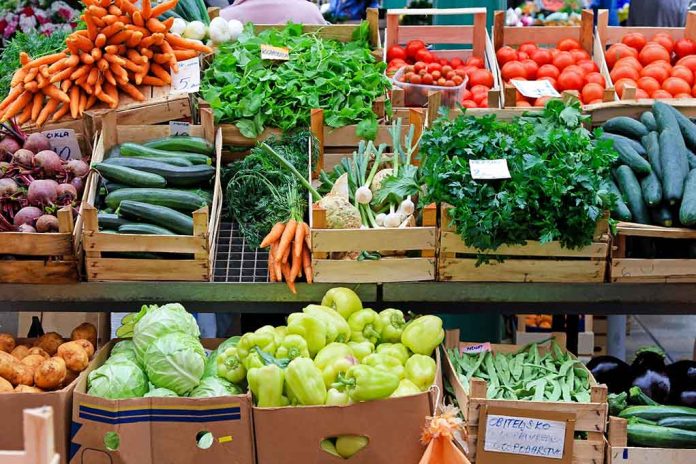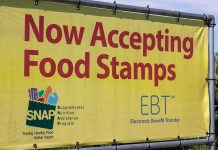
(DailyDig.com) – Eating healthy on a tight budget can be almost impossible. Fresh fruits and vegetables, quality meats, and protein staples can be expensive and difficult to find in many low-income areas.
The federal government strives to fill that gap with the Emergency Food Assistance Program, also known as TEFAP, which provides fresh and nutritious foods to low-income residents at no cost.
How TEFAP works
The U.S. Department of Agriculture buys the foods for TEFAP from American producers. It distributes the food to states based on their unemployment rates and the number of people living below the poverty level for the state. States, in turn, pass the food along to local agencies that support low-income food programs, such as food pantries or community kitchens that provide free meals.
The government also provides funding to the agencies for transportation, storage, administrative expenses, and advertising, on top of the food supplies.
Congress approves an annual budget to support TEFAP purchases but also authorizes another program designed to assist producers by purchasing extra commodities. When those purchases are made, they also are given to TEFAP for extra distribution to states and local agencies.
Besides food pantries, states provide the TEFAP foods to other local agencies that give food to low-income families, for instance through monthly drive-through food assistance programs, backpack programs, etc. Food pantries generally distribute TEFAP as boxes of food for families on a monthly basis.
What foods are included in TEFAP packages?
USDA will distribute different types of food through TEFAP, based on state preference and the foods available during the time of year.
TEFAP packages generally will include non-perishable foods, such as canned, frozen, or dried fruits and vegetables, nuts, and whole-grain and enriched grain products, including rice, cereal, and pasta. But the real beauty of the TEFAP program is that packets also include perishable items such as fresh fruits and vegetables, meat, poultry, eggs, fish, and dairy products, such as milk and cheese, many of the commodities that can be difficult for low-income families to either afford or to find in their neighborhood markets.
More than 120 nutritious, high-quality products are included in TEFAP, helping enhance the diet of low-income Americans. TEFAP also provides recipes that participants can use to prepare the food included in the packages.
Who is eligible to receive TEFAP packages?
Because this is a federal-government program, those qualifying for the food packages must prove they are eligible based on household income. Eligibility is determined by states, so the figure will vary by state and household size. Those interested in applying can find information from the USDA about their state.
Generally, families who qualify for other food assistance programs, such as SNAP or free or reduced school lunches, will be eligible to receive TEFAP assistance.
Programs that provide prepared meals for local residents need to prove that they are serving predominantly low-income families to receive TEFAP support. Participants in the meal programs do not need to provide any proof of income to receive meals.
Other food assistance programs
Other programs administered by the Food and Nutrition Service branch of the USDA that low-income residents may qualify for include:
- National School Lunch Program (NSLP): provides free or reduced-price lunches and breakfasts
- Supplemental Nutrition Assistance Program (SNAP): provides a monthly stipend on an EBT card that can be used to purchase food.
- Special Supplemental Nutrition Program for Women, Infants, and Children (WIC): provides assistance to expecting mothers and then their newborn and infant children.
- Commodity Supplemental Food Program (CSFP): provides supplemental food to low-income residents who are age 60 and older.
- Food Distribution Program on Indian Reservations (FCPIR): provides assistance to Native Americans.
Copyright 2022, DailyDig.com













